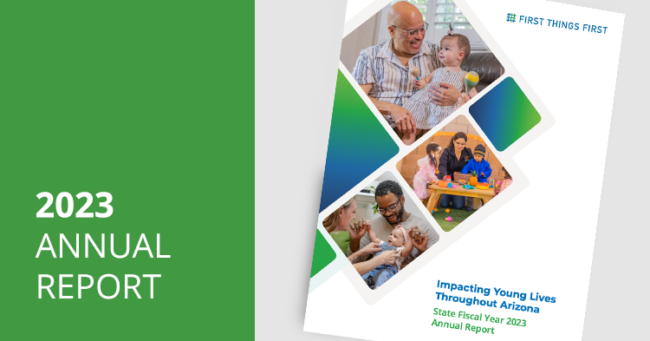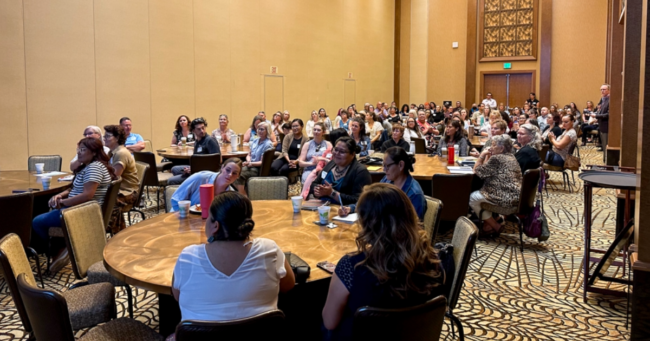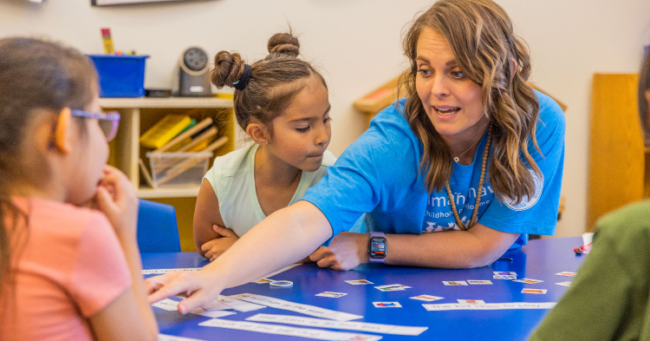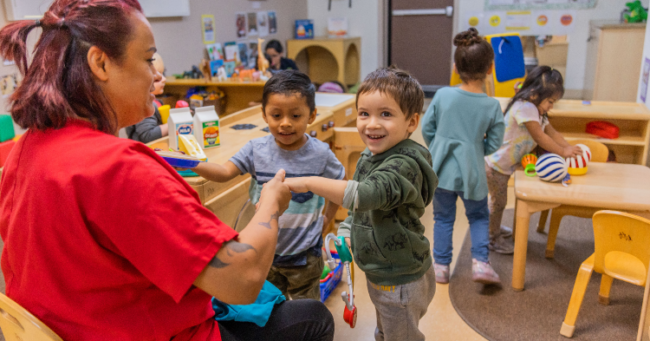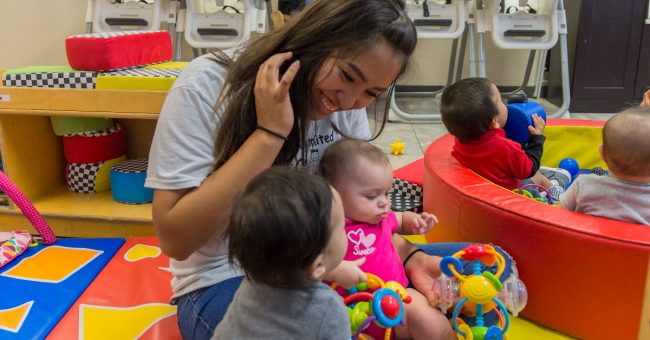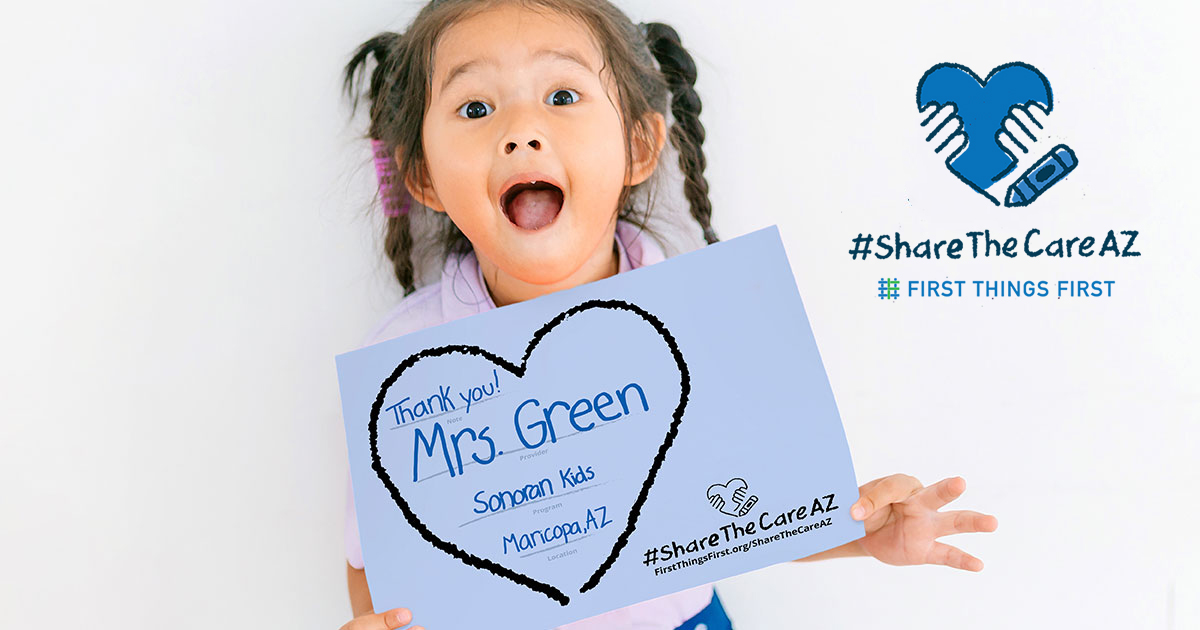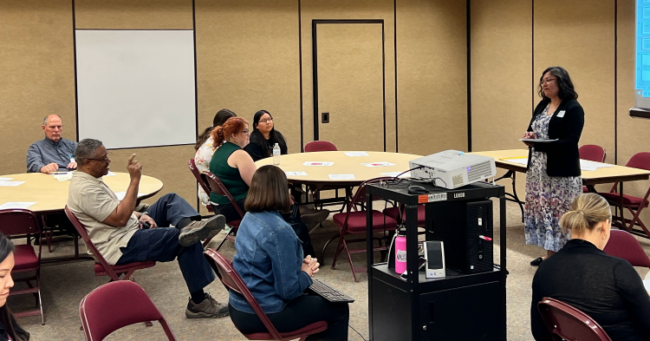Shilo Murillo stood proudly at the gates of her preschool pointing out an update to the security system that would allow her to lockdown her school immediately in case of an emergency.
“Before we couldn’t do it at all,” said Murillo, who is director of the First Presbyterian Preschool in Mesa. “We had to lock the door from the outside.”
The security system is one of dozens of upgrades that the Mesa preschool, which can serve up to 59 children, was able to make after undergoing a $254,000 remodel made possible by an Arizona Child Care Infrastructure Grant.
The grant is one of more than 30 initiatives to support child care providers that have been funded through an unprecedented investment in the nation’s early care and education industry from the federal government.
It was a response to the COVID-19 pandemic that nearly devastated an already precarious child care system.
In Arizona, the federal relief totaled $1.3 billion and has been a lifeline of support for child care providers who struggled to re-open after pandemic closures because of higher operating costs and workforce shortages. But the federal assistance is ending and child care and early learning advocates are warning of a child care cliff that jeopardizes working families, employers and Arizona’s economy if nothing is done.
“This isn’t just a crisis for parents,” said First Things First CEO Melinda Morrison Gulick. “If nothing changes, child care challenges will impact employers and their workforce which will continue to negatively impact Arizona’s economy.”
The grant that Murillo was awarded was administered by Local Initiatives Support Corporation (LISC) Phoenix, in partnership with the Arizona Department of Economic Security (DES) and Arizona’s early childhood agency, First Things First (FTF) through the federal pandemic relief funding that DES administers.
The Infrastructure Grant program focused on child care providers who serve DES-eligible families in areas where child care is extremely limited or unavailable, including areas where it is critical to provide non-standard hour care, infant and toddler care, child care in underserved areas, and child care that meets the needs of children with disabilities. In general, child care assistance is available for a working parent with an income at or below 165% of the Federal Poverty Level. The grant funded 480 projects to improve child care facilities across the state.
At First Presbyterian in Mesa, the grant allowed for updates to everything from an HVAC system to a security system and gates and also helped to refurbish bathrooms, classrooms, playground enhancements and outdoor spaces.
The Mesa preschool serves as just one example of the nearly 3,000 child care providers who have benefited from this historic federal funding. As the child care providers celebrated all the positive improvements that funding was able to provide over the last three years, it raised concerns about the coming challenges that child care programs face without this support.
A recent report from the National Association for the Education of Young Children provided results from an October 2022 survey of more than 12,000 early childhood educators from all states and settings—including faith-based programs, family child care homes, Head Starts and child care centers in the early childhood education field.
The report concluded: “The problems are clear: Families still can’t find or afford child care because compensation is too low to attract and retain early childhood educators. As federal relief dollars that have saved the sector from complete collapse begin to dry up, the stability those dollars brought to programs will disappear with the funding.
“The solutions are clear: The public benefits from public investments in child care and early learning. Congress needs to build on the successes of child care funding to prioritize additional, sustainable investments that ensure programs and educators can meet the needs of families, children, and businesses, and states can continue to build toward an early childhood education system that works.”
When the stabilization grants end, more than half of the providers surveyed said that their programs would have to raise tuition and 35% said they would have to cut wages or be unable to sustain wage/salary increases.
The survey data from Arizona showed almost 80% of child care directors/administrators and 77% of family child care owners/operators reported receiving federal stabilization grant funding and close to 40% said their programs would have closed without the grants. And when the stabilization grants end, more than half said that their programs would have to raise tuition and 35% said they would have to cut wages or be unable to sustain wage/salary increases.
It’s a nearly impossible situation:
- Families scramble to find affordable child care as child care costs have grown twice as fast as overall inflation since the 1990s.
- Employers deal with more employee absences and resignations – a recent study shows that Arizona employers lose $1.42 billion annually due to absences and employee turnover related to child care challenges.
- Child care providers struggle to keep classrooms open to meet demand – NAEYC studies found that 69% of Arizona child care providers report staffing shortages.
The $1.3 billion that Arizona received helped child care providers supplement worker wages – which are notoriously some of the lowest wages across all sectors. But once those funds disappear, and since families can’t afford to pay more, child care providers worry more of their staff will move to other jobs that pay more and offer better benefits.
With 60% of young children in Arizona living in homes where all adults are in the workforce, fixing the broken child care system is a critical economic development issue. Before the pandemic, Arizona already had a 25% gap between potential child care need and actual supply. In some areas of the state, that gap is even higher. There are about 304,000 children under age 6 who might need child care yet there were only about 234,000 available slots. If more child care providers close, that gap will only get wider.
Monthly stabilization grants pumped about $571 million into the Arizona child care industry over the last two years. That funding, which was the largest single initiative, ended in September. Other smaller initiatives had ended a various points over the last two years.
The last of what’s left of the total $1.3 billion of federal relief funding ends in mid-2024. Child care and early learning advocates are working in communities across Arizona to raise awareness about the coming fiscal cliff.
By working together with community leaders and the business sector that is increasingly paying the costs of a broken system, important steps can be taken toward finding long-term solutions to Arizona’s child care crisis.
“Public investments in early care and education are good for Arizona’s kids and families, good for Arizona employers and good for Arizona’s economy,” Gulick said.
At the Mesa preschool grand reopening, Murillo had poster boards filled with progress photos as the remodel work was completed and she had lists of local vendors, contractors and small businesses who had done the work.
“We’re talking about building up the community at large and finding the impact of how this funding can help at all levels,” Murillo said. “It’s impacted not just the teachers, but it’s impacted the families. They’re feeling safe and secure. And they’re feeling modern and the money has been well spent.”


